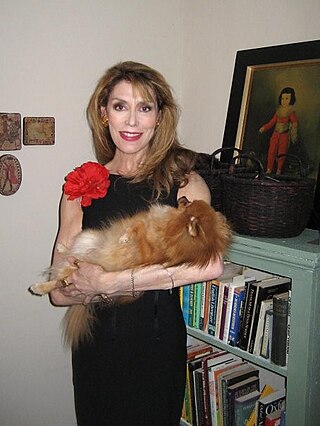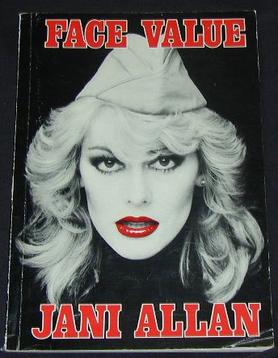Related Research Articles

Photojournalism is journalism that uses images to tell a news story. It usually only refers to still images, but can also refer to video used in broadcast journalism. Photojournalism is distinguished from other close branches of photography by having a rigid ethical framework which demands an honest and impartial approach that tells a story in strictly journalistic terms. Photojournalists contribute to the news media, and help communities connect with one other. They must be well-informed and knowledgeable, and are able to deliver news in a creative manner that is both informative and entertaining.
The Leader, His Driver and the Driver's Wife is a 1991 British feature-length documentary film set during the final days of apartheid in South Africa, particularly centring on Eugène Terre'Blanche, founder and leader of the far-right Afrikaner Weerstandsbeweging (AWB). The film was directed by Nick Broomfield and first shown in 1991. It received an average of 2.3 million viewers during its screening on Channel 4. A year later it was the subject of legal action brought by the journalist, Jani Allan, in what was described as "the libel case of the summer". In 2006, Broomfield released a follow-up, His Big White Self.

Raghu Rai is an Indian photographer and photojournalist. He was a protégé of Henri Cartier-Bresson, who nominated Rai, then a young photojournalist, to join Magnum Photos in 1977.

Arnold Abner Newman was an American photographer, noted for his "environmental portraits" of artists and politicians. He was also known for his carefully composed abstract still life images. In 2006, he was inducted into the International Photography Hall of Fame and Museum.
Documentary photography usually refers to a popular form of photography used to chronicle events or environments both significant and relevant to history and historical events as well as everyday life. It is typically undertaken as professional photojournalism, or real life reportage, but it may also be an amateur, artistic, or academic pursuit.

DRUM is a South African online family magazine mainly aimed at black readers, containing market news, entertainment and feature articles. It has two sister magazines: Huisgenoot and YOU.
The Sunday Times is South Africa's biggest Sunday newspaper. Established in 1906, it is distributed throughout South Africa and in neighbouring countries such as Lesotho, Botswana, and Eswatini.

Jani Allan was a South African journalist, columnist, writer, broadcaster, and a media celebrity.
Jürgen Schadeberg was a German-born South African photographer and artist. He photographed key moments in South African history, including iconic photographs such as Nelson Mandela at Robben Island prison. He also lived, worked and taught in London and Spain, and photographed in many African countries.
Alfred Khumalo, better known as Alf Kumalo, was a South African documentary photographer and photojournalist.

Face Value is a 1983 anthology of collected journalism by South African journalist Jani Allan. The book is compiled from selections of Allan's successful gossip and popular culture column Just Jani that appeared in the Sunday Times. She was voted "the most admired person in South Africa." in a Gallup poll commissioned by the newspaper. The book was published by Longstreet publishers in Cape Town and released in South Africa in 1983.
Charles E. Brown was a commercial aviation photographer working for United Kingdom newspapers, the aviation industry and a freelance commercial photographer with official accreditation as a war correspondent. His aviation archive of 30,000 images has been preserved at the RAF Museum, Hendon since 1978.
John Kobal was an Austrian-born British based film historian responsible for The Kobal Collection, a commercial photograph archive related to the film industry.
Joseph Makula (1929–2006) was a Congolese photographer. He initially served as a military photographer for the Force Publique before being hired as the first Congolese photographer for Congopresse in 1956. After Congopresse closed in 1968, he worked as a freelancer and established his own studio. He died in 2006.

Ian Berry is a British photojournalist with Magnum Photos. He made his reputation in South Africa, where he worked for the Daily Mail and later for Drum magazine. He was the only photographer to document the massacre at Sharpeville in 1960, and his photographs were used in the trial to prove the victims' innocence. Ian Berry was also invited by Henri Cartier-Bresson to join Magnum Photos in 1962 when he was based in Paris; five years later he became a full member.
Eric Miller is a professional photographer based in South Africa. Miller was born in Cape Town but spent his childhood in Johannesburg. After studying psychology and working in the corporate world for several years, Miller was driven by the injustices of apartheid to use his hobby, photography, to document opposition to apartheid by becoming a full-time photographer.
Armet Francis is a Jamaican-born photographer and publisher who has lived in London since the 1950s. He has been documenting and chronicling the lives of people of the African diaspora for more than 40 years and his assignments have included work for The Times Magazine, The Sunday Times Supplement, BBC and Channel 4.

John W. Mosley was a self-taught photojournalist who extensively documented the everyday activities of the African-American community in Philadelphia, Pennsylvania, for more than 30 years, a period including both World War II and the civil rights movement. His work was published widely in newspapers and magazines including The Philadelphia Tribune, The Pittsburgh Courier and Jet magazine.
Chris Karsten is a South African journalist and writer writing in Afrikaans who has received numerous awards for his writing.
References
- ↑ "Where past and present meet". Saturday Star. 10 November 2008. Retrieved 29 March 2023.
- ↑ "Pole position". Saturday Star. 27 December 2007. Retrieved 29 March 2023.
- 1 2 3 4 5 6 "Andrezej Sawa". Nikon Professional Services. Archived from the original on 22 June 2008.
- ↑ Allan, Jani (1980s). Face Value. Longstreet.
- ↑ Face and Places (Jani Allan) Archived 2009-11-29 at the Wayback Machine New Hope Pennsylvania. 2003